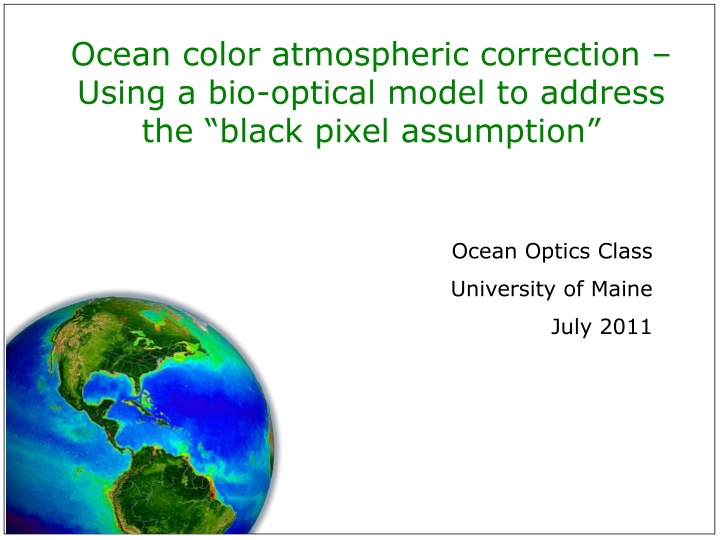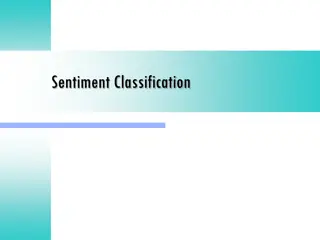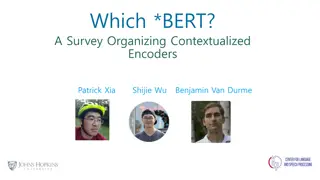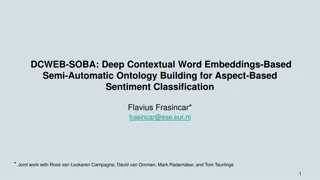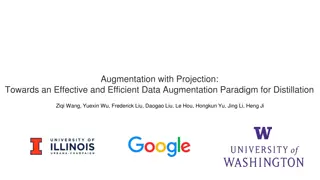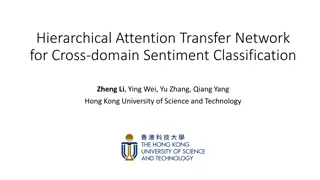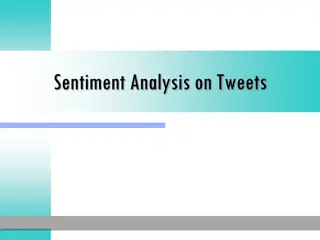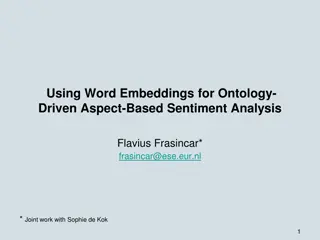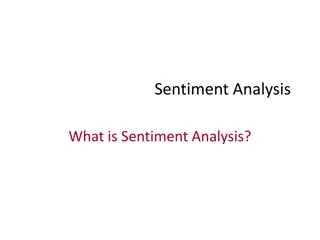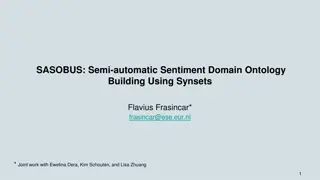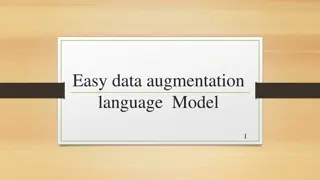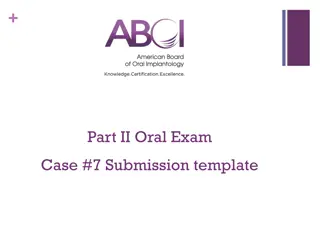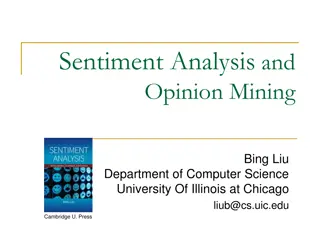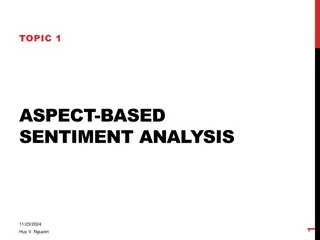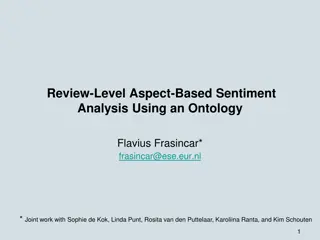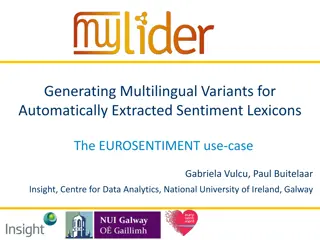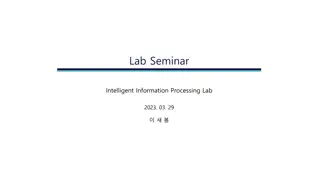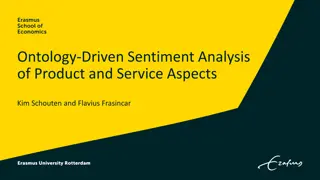Data Augmentation Using BERT-Based Models for Aspect-Based Sentiment Analysis
This study delves into the application of BERT-based models for aspect-based sentiment analysis, focusing on the importance and challenges of sentiment mining in the context of product reviews. It explores techniques such as aspect detection and sentiment classification, emphasizing the need for automation due to the overwhelming volume of online reviews. The motivation, methodology, evaluation, and future work are covered, with a spotlight on enhancing sentiment analysis through data augmentation.
Download Presentation

Please find below an Image/Link to download the presentation.
The content on the website is provided AS IS for your information and personal use only. It may not be sold, licensed, or shared on other websites without obtaining consent from the author.If you encounter any issues during the download, it is possible that the publisher has removed the file from their server.
You are allowed to download the files provided on this website for personal or commercial use, subject to the condition that they are used lawfully. All files are the property of their respective owners.
The content on the website is provided AS IS for your information and personal use only. It may not be sold, licensed, or shared on other websites without obtaining consent from the author.
E N D
Presentation Transcript
Ocean color atmospheric correction Using a bio-optical model to address the black pixel assumption Ocean Optics Class University of Maine July 2011
satellite ocean color ocean color satellites view the top of the atmosphere this signal includes contributions from: model Rayleigh (air molecules) surface reflection model aerosols water 0 to remove the aerosol signal, we make some assumptions about the blackness of the water signal in near-infrared (NIR) bands
what happens when we dont account for Rrs(NIR) > 0? use the black pixel assumption (e.g., SeaWiFS 1997- 2000)
correction of non-negligible Rrs(NIR) estimate Rrs(NIR) using a bio-optical model operational SeaWiFS & MODIS processing ~ 2000-present
bio-optical model initial Rrs(670) measured by satellite (using Rrs(765) = 0)
bio-optical model initial Rrs(670) measured by satellite (using Rrs(765) = 0) model a(670) = aw(670) + apg(670) = 0.1 m-1 aw(670) = 0.44 m- 1
bio-optical model initial Rrs(670) measured by satellite (using Rrs(765) = 0) model a(670) = aw(670) + apg(670) estimate bb(670) using Rrs(670), a(670), & G(670) [Morel et al. 2002]
bio-optical model initial Rrs(670) measured by satellite (using Rrs(765) = 0) model a(670) = aw(670) + apg(670) estimate bb(670) using Rrs(670), a(670), & G(670) [Morel et al. 2002] model using Rrs(443) & Rrs(555) [Lee et al. 2002] from Carder et al. 1999
bio-optical model initial Rrs(670) measured by satellite (using Rrs(765) = 0) model a(670) = aw(670) + apg(670) estimate bb(670) using Rrs(670), a(670), & G(670) [Morel et al. 2002] model using Rrs(443) & Rrs(555) [Lee et al. 2002] estimate bb(765) using bb(670) &
bio-optical model initial Rrs(670) measured by satellite (using Rrs(765) = 0) model a(670) = aw(670) + apg(670) estimate bb(670) using Rrs(670), a(670), & G(670) [Morel et al. 2002] model using Rrs(443) & Rrs(555) [Lee et al. 2002] estimate bb(765) using bb(670) & reconstruct Rrs(765) using bb(765), aw(765), & G(765) aw(765) = 2.85 m-1
bio-optical model initial Rrs(670) measured by satellite (using Rrs(765) = 0) model a(670) = aw(670) + apg(670) estimate bb(670) using Rrs(670), a(670), & G(670) [Morel et al. 2002] model using Rrs(443) & Rrs(555) [Lee et al. 2002] estimate bb(765) using bb(670) & reconstruct Rrs(765) using bb(765), aw(765), & G(765) iterate until Rrs(765) changes by <2% (typically 3-4 iterations)
locations of application of bio-optical model black = land; grey = Chl < 0.3 mg m-3; white Chl > 0.3 mg m-3 not applied when Chl < 0.3 mg m-3 weighted application when 0.3 < Chl < 0.7 mg m-3 fully applied when Chl > 0.7 mg m-3
what happens when we dont account for Rrs(NIR) > 0? use the black pixel assumption (e.g., SeaWiFS 1997- 2000)
correction of non-negligible Rrs(NIR) estimate Rrs(NIR) using a bio-optical model operational SeaWiFS & MODIS processing ~ 2000-present
references Bailey et al. 2010, Optics Express 18, 7521-7527 Stumpf et al. 2003, SeaWiFS Postlaunch Tech Memo Vol. 22, Chapter 9 Siegel et al. 2000, Applied Optics 39, 3582-3591 others
